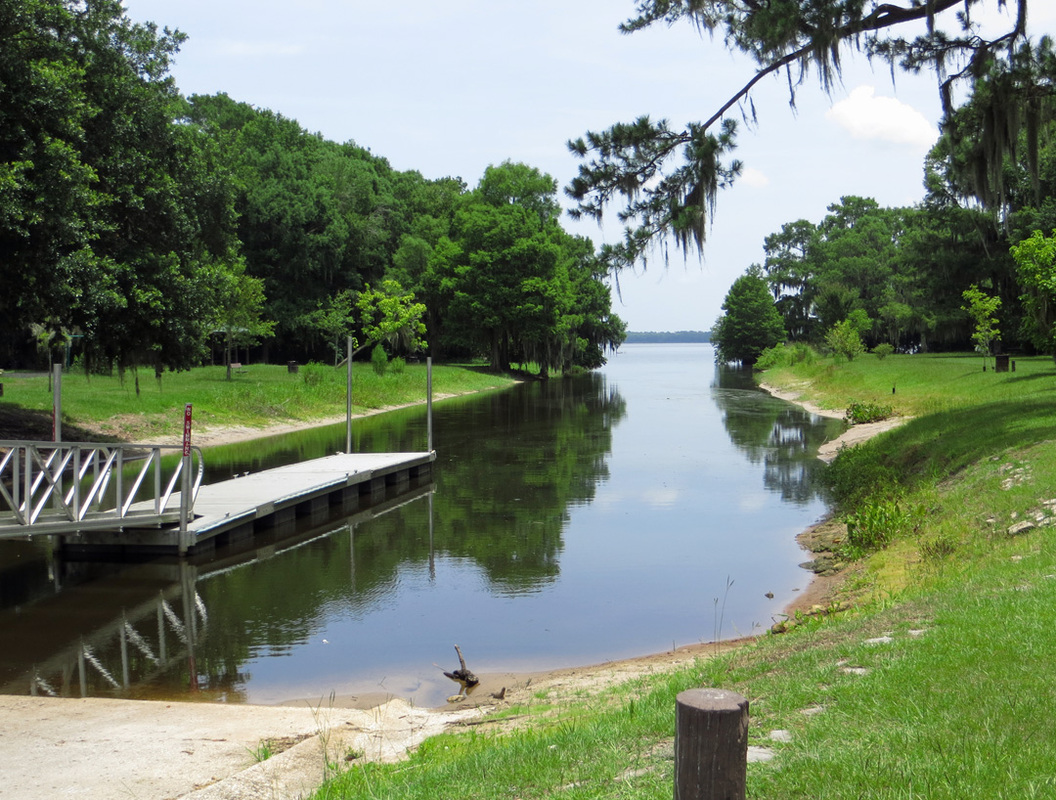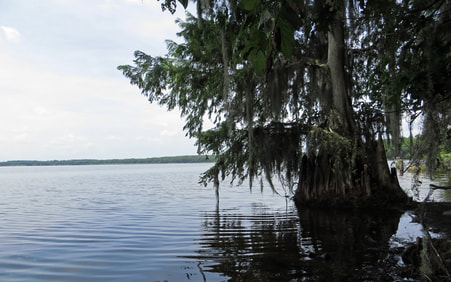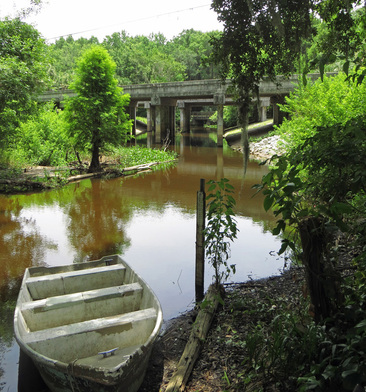Chasing speckled perch on Newnans Lake
|
When the water got high in Newnans Lake outside of Gainesville my father would always take me fishing. That seemed to coincide with the time the speckled perch (also called black crappies) were bedding and you could catch a bucketful if you knew where to go.
We would put the boat in at Kate’s Fish Camp on Prairie Creek and followed the narrow stream out to the lake. From there we’d stay close to the edge, or as close as we could get. Newnan’s is ringed in cypress trees and knees and there were lily pads beyond the cypress. The bottom is sand and muck and slopes out gently from the shore in most places. In truth the bottom muck runs from eight to 16 feet deep and you do not want to step down into that. Back in the day along the shore was a great place to find arrowheads and whenever I got the chance I’d wade the shallows kicking the sand off of anything that looked like flint. So we’d edge along the tree line and look for a place we could ease the boat up into. We’d go slow, barely out of idle and sometimes would shut the motor altogether and paddle into the quiet. The trees created just enough shade to make it cooler than the open water. We’d wedge into a good spot and tie up to a limb and start to get serious. We used worms, minnows and sometimes grubs. For anyone who hasn’t put a worm on a hook it’s a messy business. To make a good looking bait you want to hook the worm close to the head and then keep looping and hooking until only about an inch and a half is left to wiggle enticingly. The worm doesn’t want to get stuck with the hook and once you make that first loop it will wiggle and extrude slimy bits and do its best to get away, but usually you win. If you are fishing with a cane pole you use a bobber to tell you when there is action. In the trees fishing is tricky since you have to swing your bait as far from you as possible. But, with limbs all around you need to find a clear spot to work your pole or you just wind up tangled in the trees. Once you get your line in you need to be quiet. Let your bobber float and watch it. You can tell when a fish is tugging at the worm or when it has taken the end of it and is teasing it away. You have to wait and be sure the fish has sucked it down or you are coming up empty if you yank that pole up. Usually we caught plenty of specks. We took a break for lunch, always the same, sardines on saltines. Other than fishing, I wouldn’t eat sardines but somehow out on the lake, under the sheltering arms of the cypress, those sardines were great. Maybe it was the worm juice on our hands ‘cause you can’t get that off your fingers without a lot of soap and hot water. Sure we’d rinse our hands in the brown water of the lake but it didn’t get much off. There we were, our bobbers floating nearby and a cracked open can of sardines dribbling oil on our saltines. Our stringer of fish swirled the water at the back of the boat. |
I can’t remember that we ever talked about anything but fishing and the lake but I do remember the way the light crept into the shadows and what it felt like when the bobber suddenly disappeared under the water and the tip of the pole curled down and I started to work that speck through the cypress knees and around tree limbs toward the boat.
The only thing better than that sardine sandwich were those speckled perch dusted in corn meal and fried up with hushpuppies later that night. |
© Copyright 2013: text Sue Harrison; photos Sue Harrison & Lee Brock for MyOldFlorida.com.
|
|
|
|





